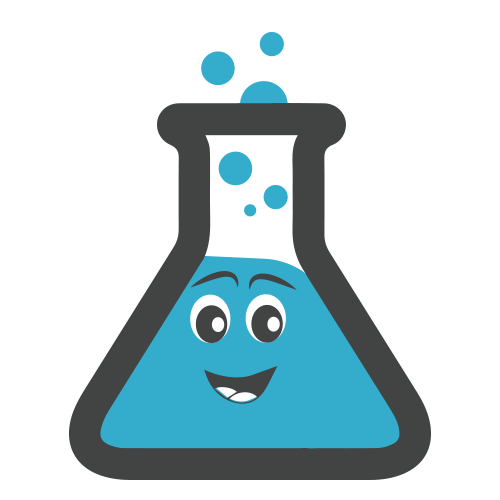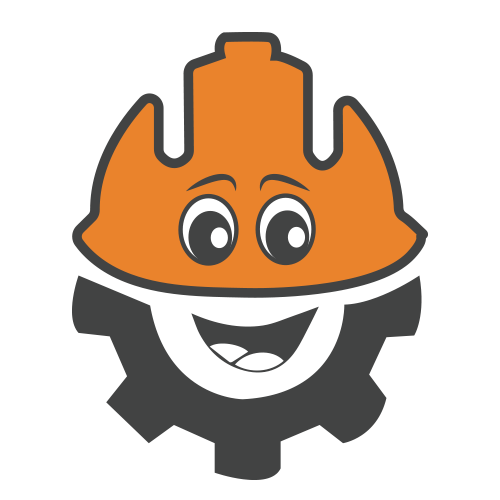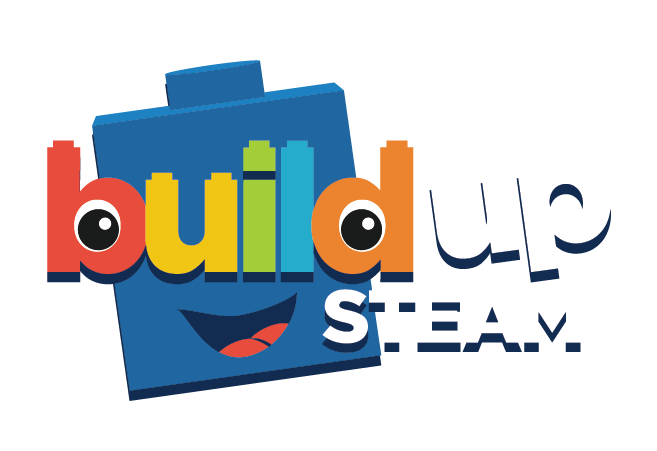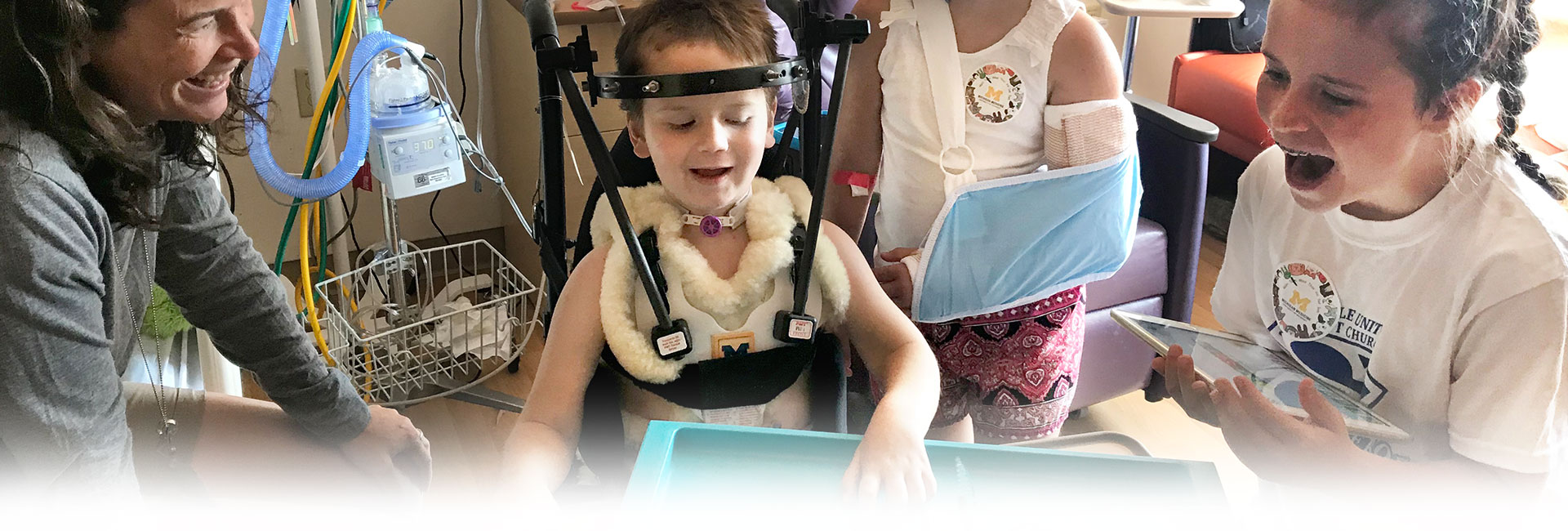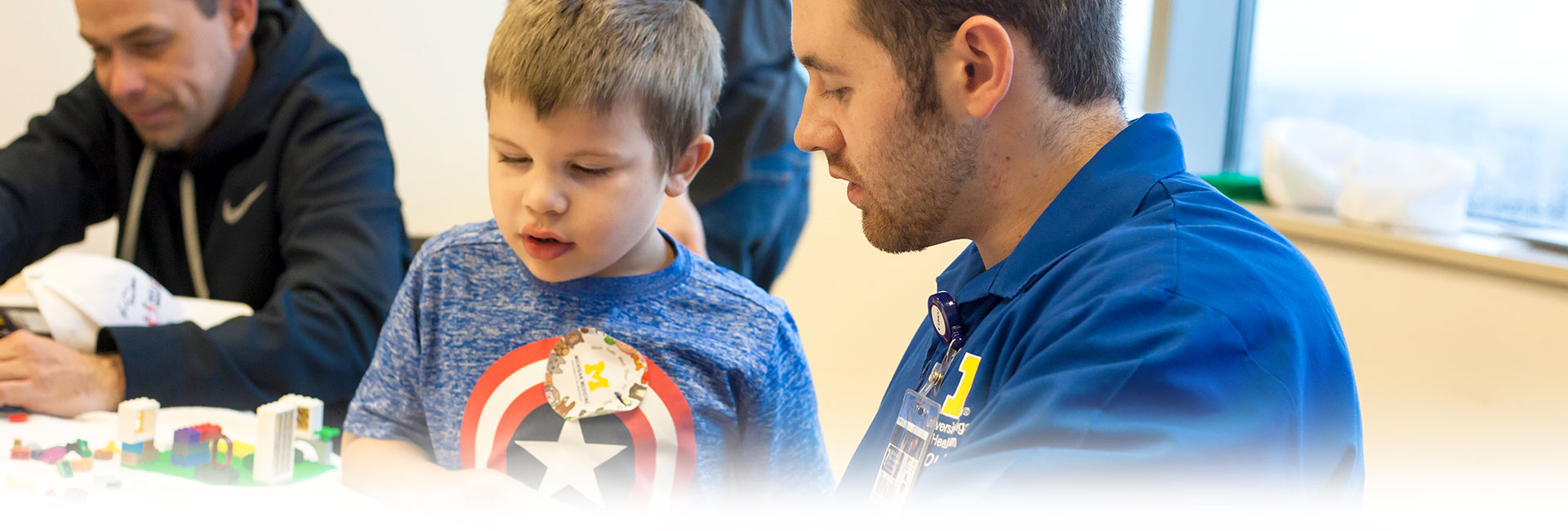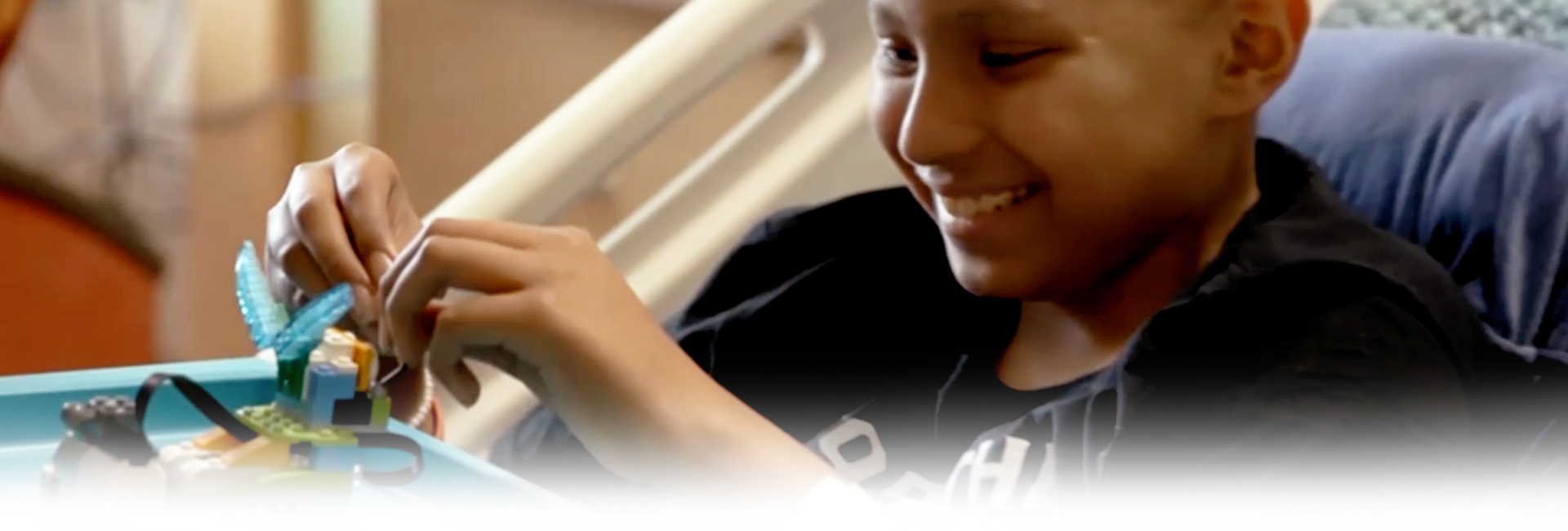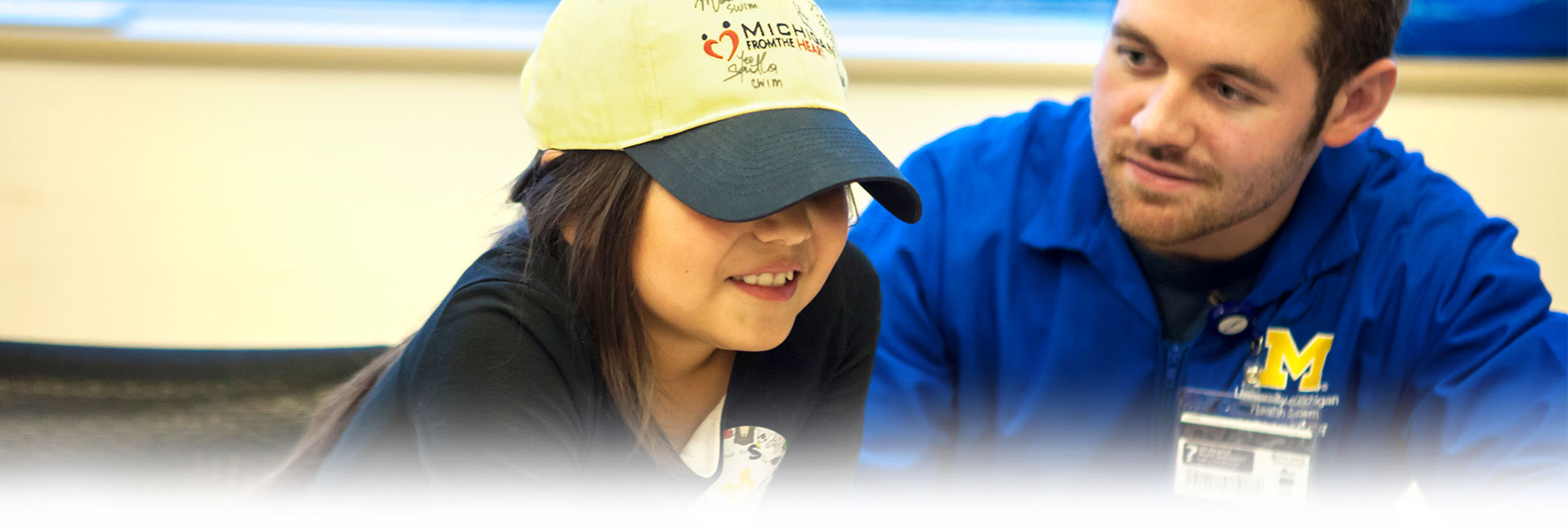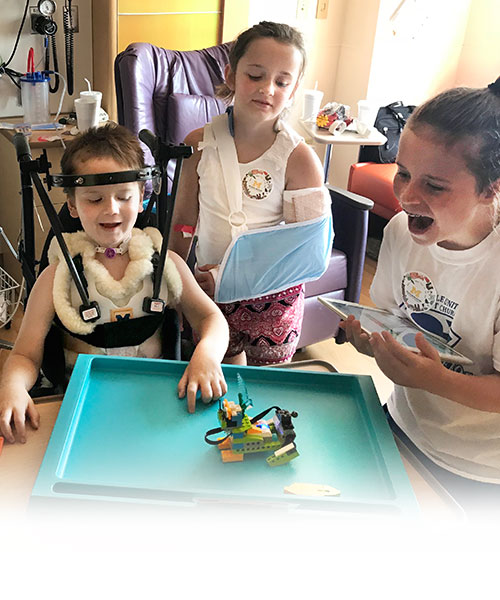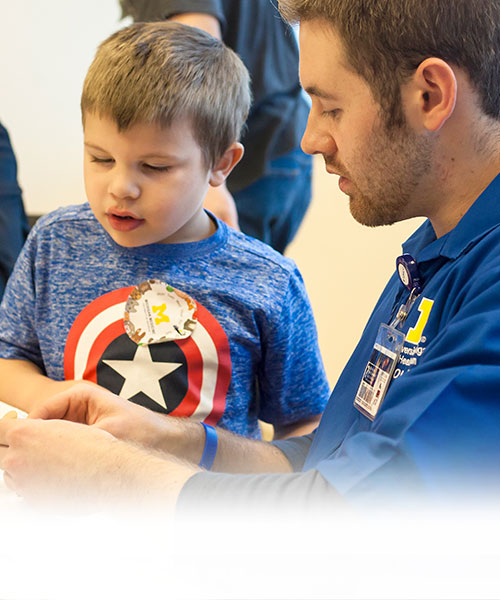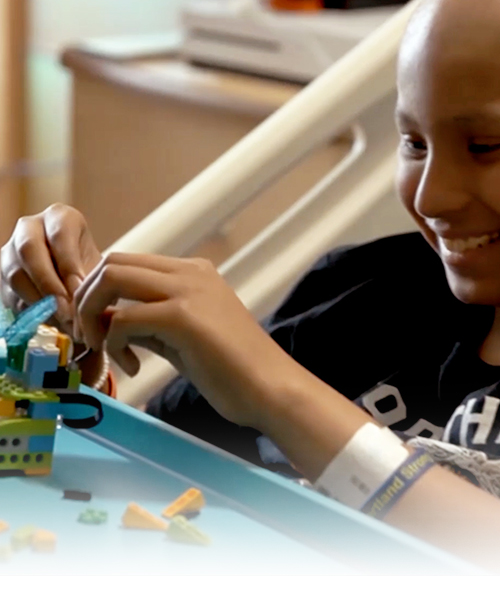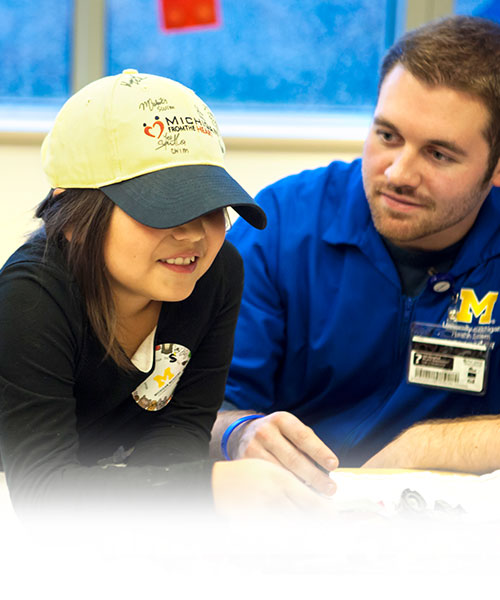About Us
Our story so far!
Buildup STEAM embarked on its journey in 2017 when visionary brothers John and Tom McInerney decided to dream big. Fueled by John's fervor for building and creating, he was inspired to empower others to step away from the stress and chaos of the world through the medium of play. With seven years of experience teaching kids at diverse engineering, robotics, and STEAM workshops, John's mission became clear: to bring the joy of creation to those who needed it the most.
John initiated his mission by volunteering at C.S. Mott Children’s Hospital, introducing LEGOs for in-hospital events. Collaborating with Child Life, they organized a LEGO party, providing patients and families with an opportunity to escape their rooms, socialize, and engage in play together. This groundbreaking inpatient event hosted over 100 people, marking a significant milestone for the hospital. Encouraged by its success, John collaborated with the Patient Technology Program and Infection Prevention Team to establish the Buildup STEAM bedside robotics program. This initiative aimed to extend creative opportunities to patients who were not able to leave their room to attend larger events. In the inaugural year at Mott, John directly impacted the lives of 300+ children at the bedside.
Hospitals
join our mission
Partnership
Buildup STEAM partners with Child Life programs to provide bedside robotics to patients and families in the hospital. Once we determine a sanitation process that meets your hospital's standards, we identify operational areas. We have found success working with general inpatient pediatric units and Hem/Onc units.
Current Hospital Partners
Mott Children’s Hospital
Children’s Hospital of Michigan
Children’s Hospital of Philadelphia
Comer Children’s Hospital
Children’s Hospital Colorado
Fundraising
Infection Control
Buildup STEAM works with hospital staff and infection prevention professionals to ensure our sanitation process exceeds the standards of the hospital setting. Our sanitation process ensures all materials are sanitized before and after entering a patient's room. After materials are used they are immediately sanitized. All interactions meet standard hospital procedures and best practices to ensure every interaction is safe and fun for the patients and families we serve.
Our COVID-19 practices meet the hospital standard for medical professionals working onsite and are subject to change based on the needs and standards of the hospitals.
Launch
Continued consultation
Child Life goals & benefits
Offering a variety of therapeutic activities, our programs provide a brief escape for patients, encouraging creativity, positivity, and self-expression to enhance their well-being.
- Patient well-being: Enhancing a patient's sense of control and independence.
- Mobile adaptation: Facilitating access to a therapeutic creative service, overcoming barriers imposed by specific diagnoses or conditions.
- Family centered care: Engaging parents and siblings equally interested in the project.
- Fine motor skills: Engaging in activities like picking up, squeezing, and pushing LEGO together.
- Normalization: Introducing familiar activities into the hospital environment to create a comforting atmosphere, promoting positive coping.
- Socialization: Fostering bedside and group social interactions, especially crucial for patients in isolated rooms due to precaution policies.
- Non-Pharmacological Pain Management: Providing a constructive focus to distract patients from pain, stress, or anxiety they may be experiencing.
Keep building up
STEAM, with its integration of various disciplines and learning avenues, plays a vital role in nurturing children's development. Through interactive play, children engage in problem-solving activities in an enjoyable and dynamic manner. They ponder questions like how spinning components drive other parts and delve into understanding the mechanisms behind motors and sensors, fostering their curiosity and critical thinking.
Throughout the process of building, children explore these concepts, formulating their hypotheses, and conducting experiments to test their ideas. This hands-on approach empowers them to develop a deeper understanding of how things work and why, cultivating their analytical skills and creativity.
In settings such as hospitals, STEAM not only serves as an educational tool but also proves therapeutic. It motivates children with limited mobility to engage in physical activities like standing, bending, and stretching while controlling their robots, promoting movement and exercise. Moreover, it aids in enhancing fine motor skills and dexterity, as seen when children manipulate bricks or components. Importantly, STEAM activities offer a welcome distraction from pain, medical procedures, or surgeries, redirecting children's focus towards an enriching and engaging experience, thereby contributing to their overall well-being.
(Colker and Simon, 2014)
